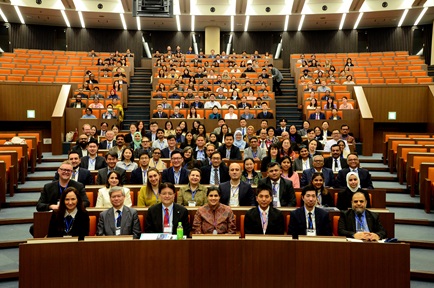By Sia Siew Kien and Mou Xu

With all the hype about technological disruption, companies are scrambling to jump onto the digital transformation bandwagon. An international Ernst & Young survey, conducted on over 900 companies in 2017, shows that 90% of these companies are elevating digital priorities in their strategic planning over the next two years. But more digital initiatives do not mean stronger transformation strategy. You need to understand the tech disruption scenario in your specific context when you formulate an effective and targeted transformation strategy.
Clarify your Specific Tech Disruption Scenario
According to Professor Ron Adner (Tuck School of Business at Dartmouth College) and Rahul Kapoor (The Wharton School at the University of Pennsylvania), a specific disruption scenario is the unfolding of competitive forces between the new and the old technology ecosystems.
The greater the challenges (e.g., industry resistance, regulatory constraints) confronting the new technology ecosystem, the slower the disruption. The more positive the improvement prospects of old technology ecosystem, the more incumbents will remain relevant and competitive. The different competitive dynamics would yield four disruption scenarios - creative destruction, illusion of resilience, robust coexistence, and robust resilience.
- Creative destruction will take place very rapidly, where the new tech ecosystem is emerging fast, and the old tech ecosystem is no longer relevant.
- Illusion of resilience is a period of inactivity followed by rapid disruption, where the old tech ecosystem is no longer relevant but the speed of new tech ecosystem emerging is slow such that incumbents will continue its dominance until new entrants resolve emergence challenges.
- Robust coexistence occurs when incumbents and new entrants each have their respective advantages because the new tech ecosystem is emerging fast and the old tech ecosystem is still relevant.
- Robust resilience is the best scenario for incumbents, where the old tech ecosystem continues to be relevant and the speed of new tech ecosystem emerging is slow.
Align Your Digital Transformation Strategy
In the Creative Destruction scenario, passive participation is most sensible as it is too late for incumbents to develop new capabilities and old tech ecosystem is no longer relevant. Refusal to acknowledge the reality can be costly. For example, to counter the rapid rise of mobile payment in China (e.g., AliPay and WeChat Pay), ICBC, China’s largest bank, invested aggressively in its own payment app and e-commerce site, but still failed to challenge the dominance of these disruptors. Instead, incumbents should focus on their niches to do what they do best, and ensure that they are readily connectable to these platforms to participate in the growth of the disruptors.
In the Illusion of Resilience scenario, incumbents should focus on preemptive reinvention. This is what DBS Bank has done. To preempt disruption of its core retail banking business, it embarked on a radical tech transformation to ramp up its digital capabilities to be like a tech giant. It invested heavily on its people to be a 22,000 person startup. It also disintermediated itself to “make banking invisible” by embedding itself in the lives of its customers.
However, preemptive reinvention is still a defensive strategy. DBS is only getting itself on par with the tech disruptors in terms of new capabilities. With the disruptors’ entrance into Singapore (e.g., Ant Financial and Grad Pay), the competitive battle is still out there to be fought. But DBS would be so much more ready to compete with these disruptors now.
Under the Robust Coexistence scenario, incumbents still have some relevant old capabilities but have no time to develop new capabilities. On the other hand, disruptors have new capabilities, but they need access to some old resources. Since they each have a piece of the puzzle, incumbents should seek to develop a win-win strategic collaboration with the disruptors.
Citibank, for example, has accumulated deep global treasury management expertise in enterprise banking, but it lacks new digital capabilities. Its strategy was to actively seek partners with complementary capabilities. KJ Han, Chief Executive of Citibank Singapore, coined the term “fintegration” and noted that banks will need to become extraordinarily adept at integrating the best fintech innovations into their operations.
Finally, in Robust Resilience, incumbents have the opportunity to entrench their competitive position through platform transformation, given their advantageous positions. For example, Ping An, China’s second largest insurance provider, went beyond reimbursement for social health insurance to build a digital ecosystem that integrated relevant healthcare services around its customers. Ping An Health Cloud facilitated sharing of patients’ electronic medical records across stakeholders (i.e., patients, clinics, insurance providers, government). Ping An Good Doctor enabled online medical consultation and Ping An Wanjia offered offline healthcare services linking to thousands of clinics. The transformation leveraged its strong incumbent advantages - high quality medical data, extensive hospital network, and massive user base.
Measure Your Digital Transformation Efforts
There is no one-size-fits-all digital transformation strategy. Ask these two questions:
- Which tech disruption scenario are you encountering?
- What should be the focus of your digital transformation strategy?
Such clarity should help you establish appropriate measures to track the progress of your transformation efforts (e.g., KPIs for “platform transformation” versus “preemptive reinvention”).
The truth is that your digital transformation efforts will be scrutinized! Unlike venture funding for startup disruptors, investments for incumbents’ digital transformation must come from its traditional businesses. You need to continuously justify the resource bridging from the old to the new. Having little to show after pouring in huge sum of money is the surest way to kill such transformations. You need to demonstrate real business value as you progress along.
Co-written with Mou Xu
About the authors
Sia Siew Kien is associate professor of Information Technology and Operations Management at Nanyang Business School at NTU Singapore while Mou Xu is research associate at the business school’s Asian Business Case Centre.
Source: Transfin, 17 March 2019








